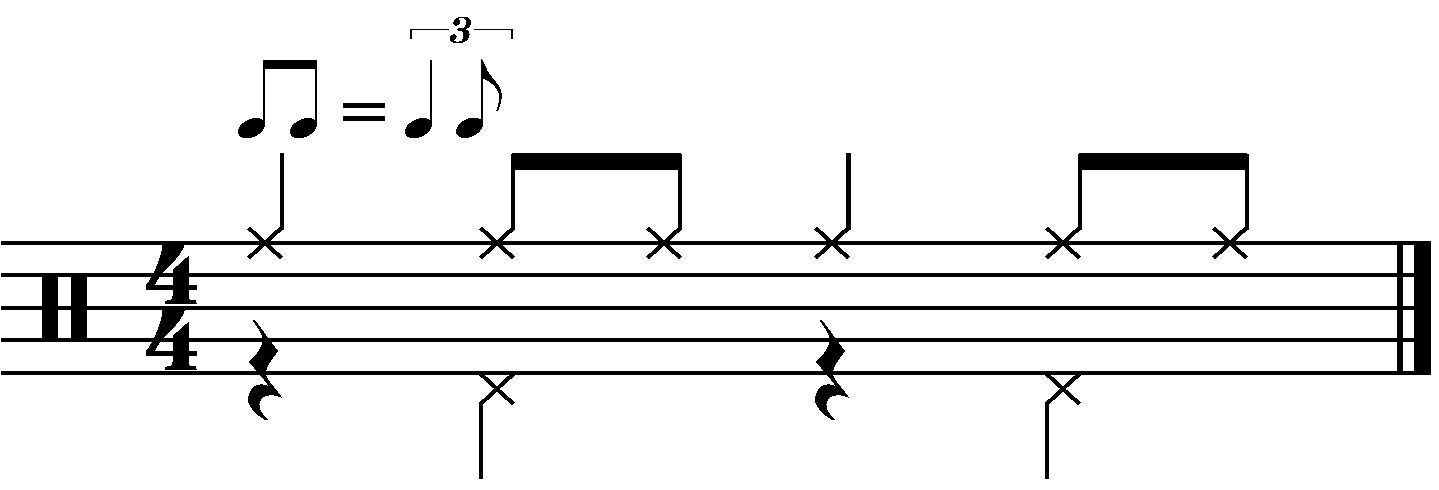In this lesson you will be learning a rudimental jazz groove. This genre is very different to the rock/pop/funk grooves you have learned at level 0 so let's start with a list of key features of this style of music:
- Almost always in Swing Time.
- The back beat is played on the left foot rather than a snare.
- There is no 'constant' right hand, instead a more swingy 8th and quarter note combination is most common.
- The snare is used to add more musical accent patterns rather than focusing on the backbeat.
- Odd time signatures, syncopation and polyrhythm are all very common.
There is a good article on wikipedia about jazz drumming, its history and different styles of jazz that you can find here.
Because jazz is such a different style of music to western pop and rock you generally need to start from scratch and try to forget a lot of things you have learned so far. What you will learn in this lesson is the equivalent to what this introductory groove lesson taught you for rock and pop. You will also be recapping on reading and playing in swing time as the short hand form of this is often used. If you aren't familiar with the notation for this you will end up playing the grooves wrong so it is very important to understand.
The Right Hand
We'll start with a simple ride pattern that will be played on the right hand. This is made up of a quarter note followed by a set of swung eighth notes, which is an eighth note triplet with the middle note missed out. The first note of the triplet is generally replaced with a quarter note to save there being unecessary rests. That would look like this:

Generally, if something is in swing time all groups of two eighth notes will be played this way, meaning it is very easy to abbreviate and get rid of all the triplet marks. Back in the pre computer days this would have been incredibly useful as it would have saved a load of time writing brackets and 3's. These days it is still useful to use as it makes a score much nicer to read. The notation for swing time is discussed in the lesson linked in the list above but I'll give a quick re cap. At the start of a piece of music that's in this timing you will see the mark you can see above the start of the bar in the example shown below. This just tells you that whenever you see groups of eighth notes you play them swung. So the example below will sound exactly the same as that given above, it's just written more efficiently.

Make sure you can play this rhythm at a tempo of around 130bpm ensuring your technique is good.
The Left Foot
Next I'll show how the left foot fits in with the ride pattern given above to give you the most basic form of a jazz groove. All it will be doing is playing where you would have found a snare in your level 0 grooves. That looks like this:

So play the ride pattern from above and whenever you count '2' or '4', play the left foot too. This may be a bit of a co ordination challenge if your a beginner or if you are very set in your ways about left foot placement so don't be afraid to spend a lot of time getting the timing right.
That's all that I'm going to cover in this lesson. In the next lesson you will look at adding simple kicks and snares but make sure you can play the full groove from this lesson before progressing.
TASK
- Learn the groove at a tempo of at least 130bpm.
- Try adding a kick on beat 1, beat 3 or both beat and beat 3.

